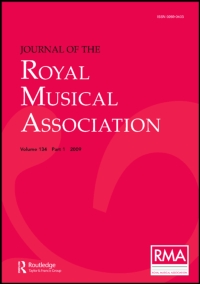Article contents
Extract
Some three years ago I had the privilege of addressing the members of this Association on the subject of “Bells and Bell Tones.” On that occasion I dealt with the bell as a musical instrument, and the paper I am about to read on Carillons is nothing more or less than a further instalment of information respecting bells on the same lines. Those of you who are conversant with that lecture will the more readily understand some of the remarks I shall make with reference to the requisite conditions necessary to produce good tone and tune in bells. On this occasion my statements concerning some of their most important characteristics must of necessity be very brief. Any who so desire can find a fuller treatment of these characteristics in the lecture I have mentioned.
- Type
- Research Article
- Information
- Copyright
- Copyright © Royal Musical Association, 1904
References
∗ The first group of notes in each diagram represents the actual notes of the bell; the second group shows the notes as they should be; a ♮ or ♭ in brackets after a note indicates that the note is slightly inclined in that direction.Google Scholar
- 1
- Cited by


